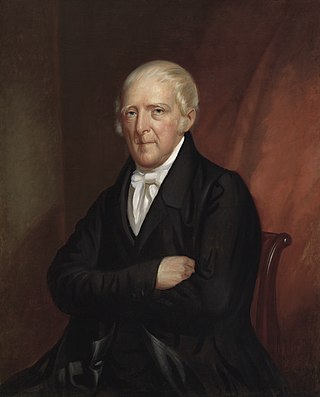
Col. John Stevens, III was an American lawyer, engineer, and inventor who constructed the first U.S. steam locomotive, first steam-powered ferry, and first U.S. commercial ferry service from his estate in Hoboken. He was influential in the creation of U.S. patent law.
John Stevens Jr. was a prominent colonial American landowner, merchant, and politician.

George Washington Parke Custis was an American plantation owner, antiquarian, author, and playwright. His father John Parke Custis was the stepson of George Washington. He and his sister Eleanor grew up at Mount Vernon and in the Washington presidential household.

Eleanor Parke Custis Lewis, known as "Nelly", was a granddaughter of Martha Washington and a step-granddaughter of George Washington.

The Bayard family has been a prominent family of lawyers and politicians throughout American history, primarily from Wilmington, Delaware. Beginning as Federalists, they joined the party of Andrew Jackson and remained leaders of the Democratic Party into the 20th century. Counting Richard Bassett, the father-in-law of James A. Bayard, Sr., the family provided six generations of U.S. senators from Delaware, serving from 1789 until 1929.

John Parke Custis was an American planter. He was a son of Martha Washington and stepson of George Washington.

John Cox Stevens was the founding Commodore of the New York Yacht Club. He was a member of the America syndicate which, in 1851, won the trophy that would become the America's Cup.
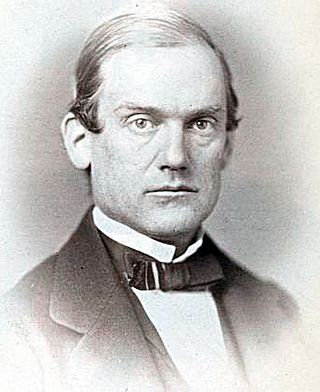
Muscoe Russell Hunter Garnett, was a nineteenth-century politician and lawyer from Virginia.
Edwin Augustus Stevens Jr. was an army officer, marine engineer, and naval architect. He was among the founders of Cox & Stevens in 1905, which became an influential and successful New York design firm.
Esther Maria "Lili" Lewis Chapin was an American socialite. She was a direct descendant of Betty Washington Lewis, the sister of George Washington. An evening gown she wore in 1888 set a world auction record when it sold in 2001.

Lawrence Lewis was a Virginia planter, possibly best known as the nephew of George Washington, who married Nelly Custis, a granddaughter of Martha Washington, and as one of the executors of the late president's estate.
Albert Baldwin Dod was an American Presbyterian theologian and professor of mathematics.
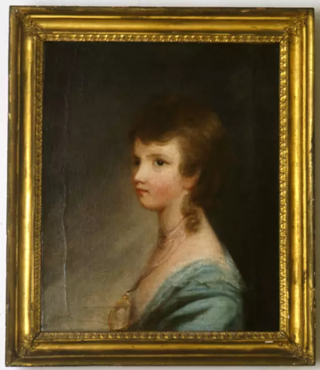
Martha Parke Custis Peter was a granddaughter of Martha Dandridge Washington and a step-granddaughter of George Washington.
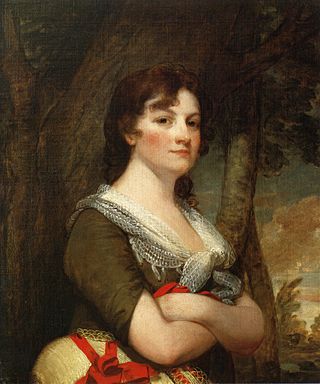
Elizabeth (Eliza) Parke Custis Law was the eldest granddaughter of Martha Dandridge Washington and a step-grandchild of George Washington. She married Thomas Law, the youngest son of the late bishop of Carlisle, England, and an experienced administrator with the East India Company.

Edward Parke Custis Lewis was a Confederate Army colonel, lawyer, legislator, and diplomat who served as United States Minister to Portugal from 1885 to 1889.

Rosalie Stier Calvert was a plantation owner and correspondent in nineteenth century Maryland. A collection of her letters, titled Mistress of Riversdale, The Plantation Letters of Rosalie Stier Calvert, was published by the Johns Hopkins University Press in 1991. The letters range in date from 1795 to 1821, and illuminate the life of Calvert's plantation household, including the events leading up to and during the War of 1812.

Ogden Haggerty Hammond was an American businessman, politician and diplomat who served as United States Ambassador to Spain from 1925 to 1929. He was the father of Millicent Fenwick, a four-term Republican member of the United States House of Representatives from New Jersey.
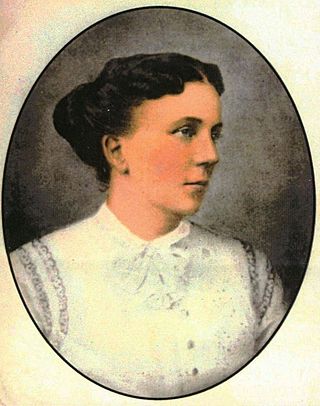
Martha Bayard Dod Stevens was a noted New Jersey philanthropist influential in advancing complementary educational pursuits.
Richard Stevens was an attorney and real estate developer in Hoboken, New Jersey which his family owned all of at one time.
Arianna Carter was born around 1770 and brought to Mount Vernon by Martha Custis, who married George Washington in 1759. Martha Custis brought her 84 slaves which she had acquired from a previous marriage with her to Washington’s Mount Vernon Estate. Arianna Carter was an enslaved maid for the estate. George and Martha had no kids together, but Washington adopted Eleanor Parke Custis and George Washington Park Custis who went by “Wash” and “Nelly”. George Washington Parke Custis and Mary Fitzhugh married in 1804 They had 4 children, but only one of them would survive into her adult life. George Park Custis also had other children with slaves that Martha had brought from her previous marriage. George Washington Parke Custis had a child with Arianna Carter, in 1803 who was named Maria Carter.














